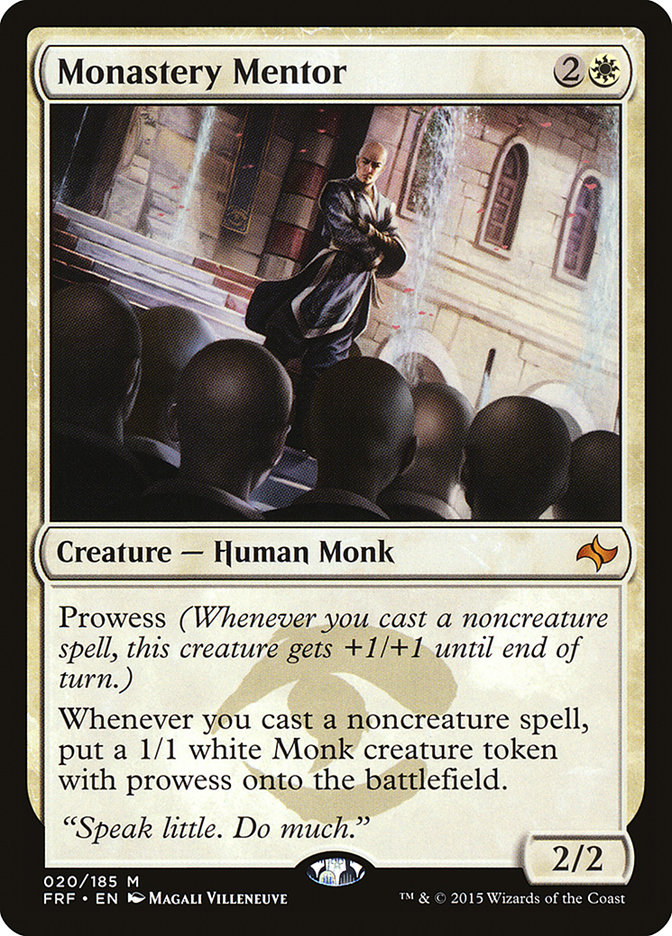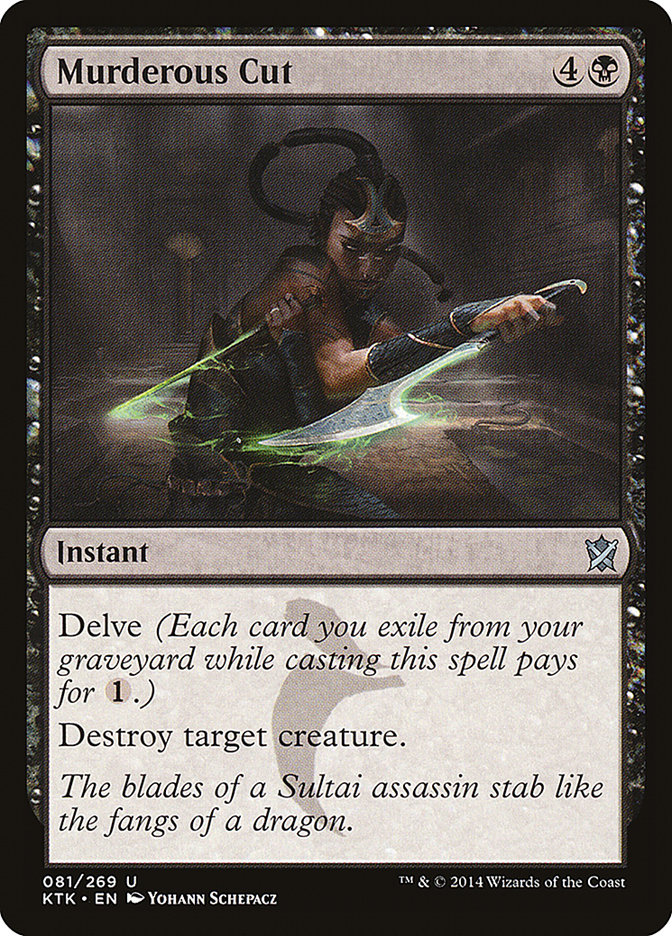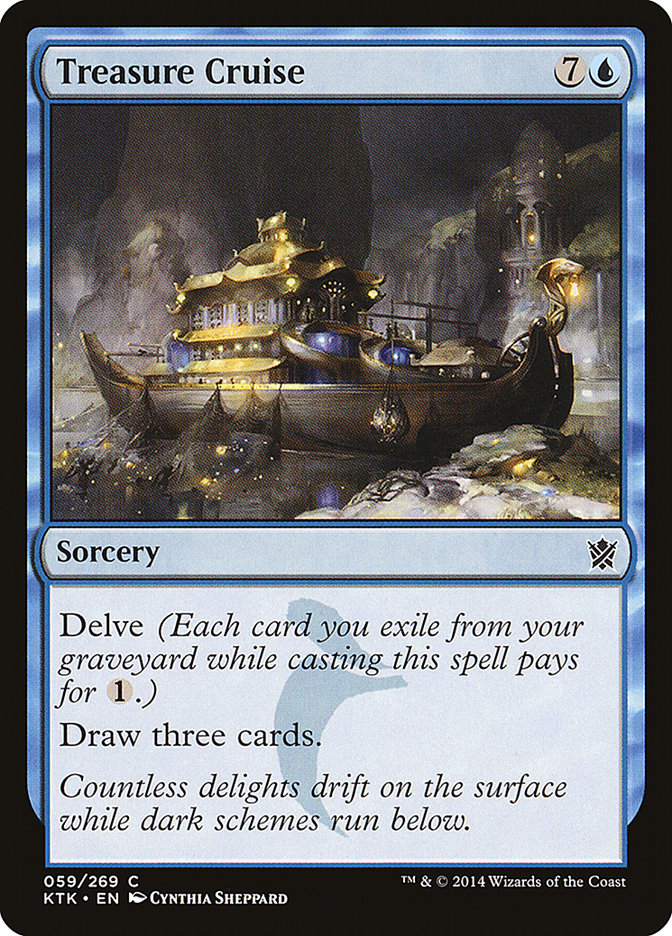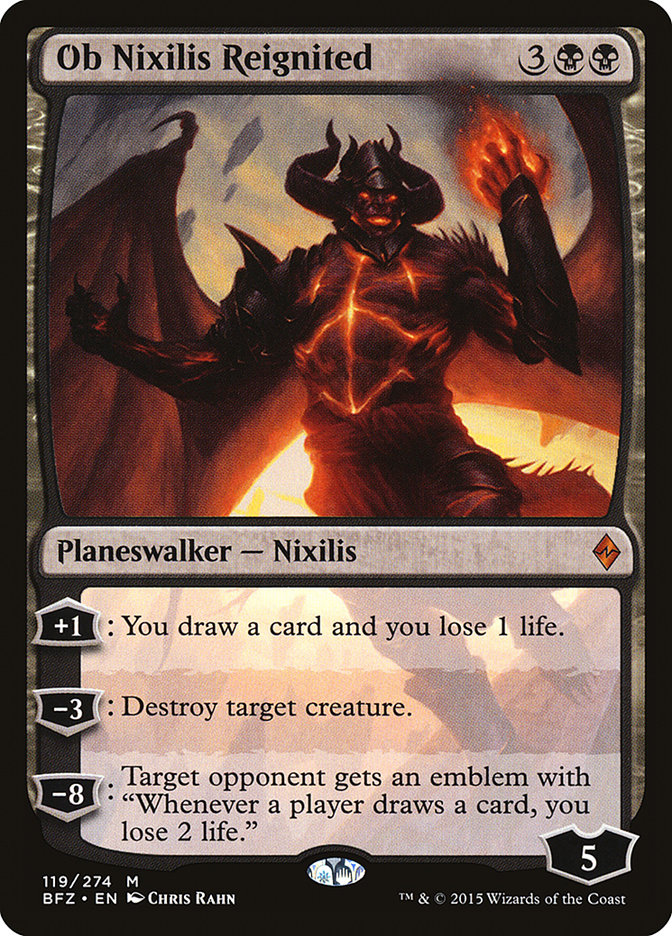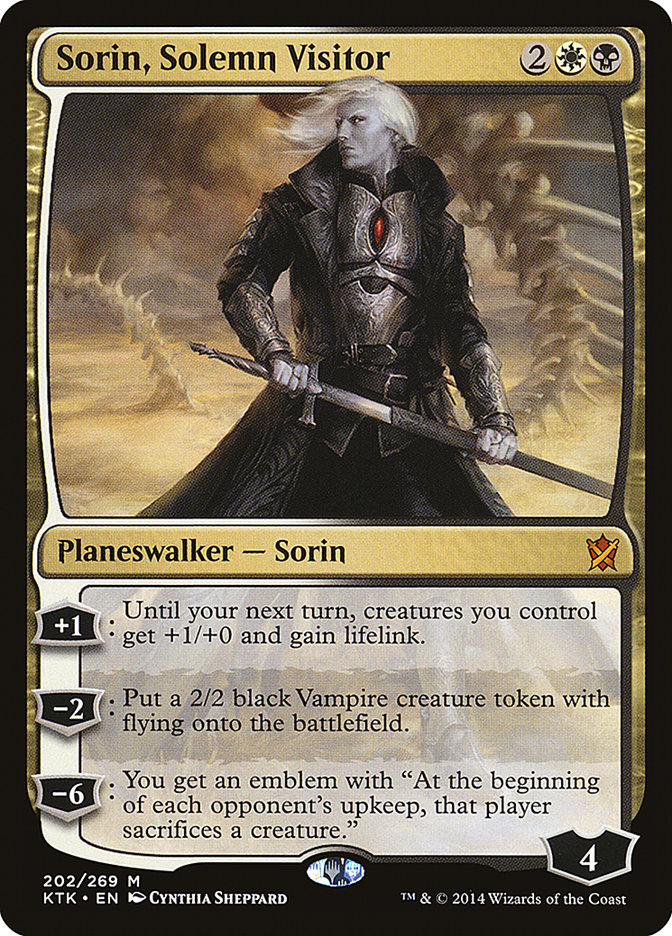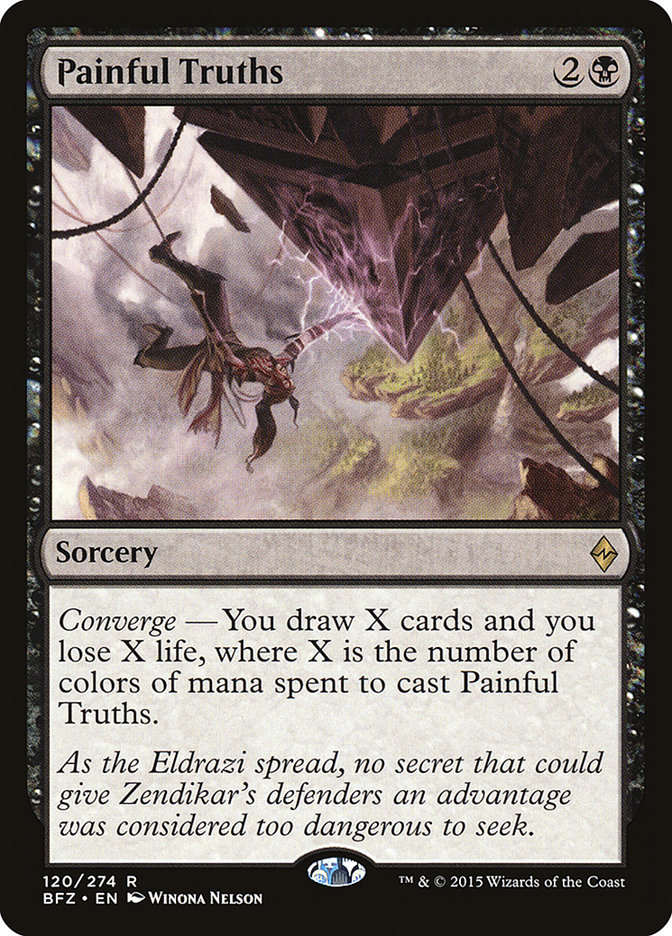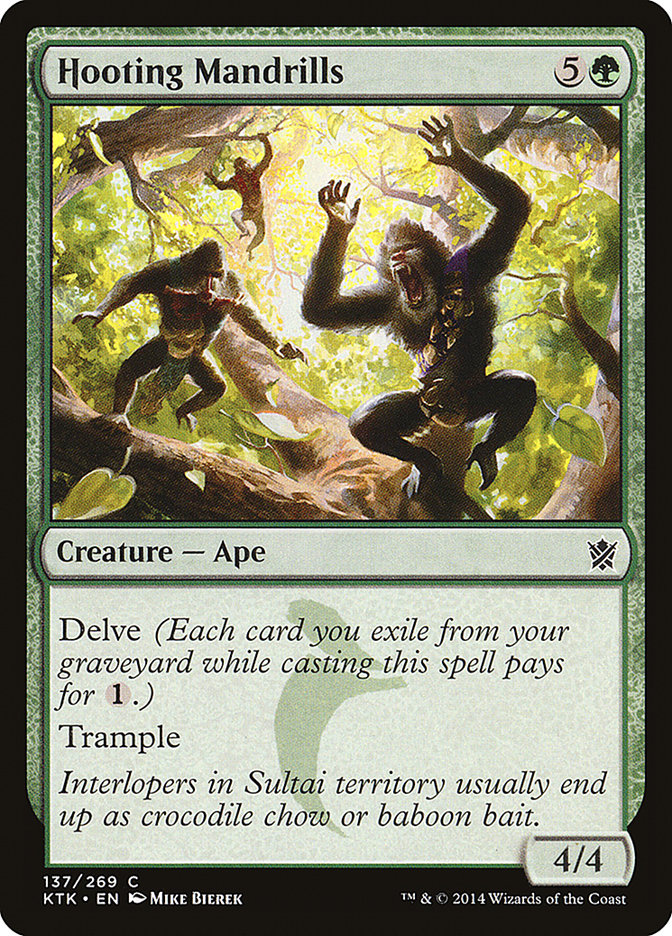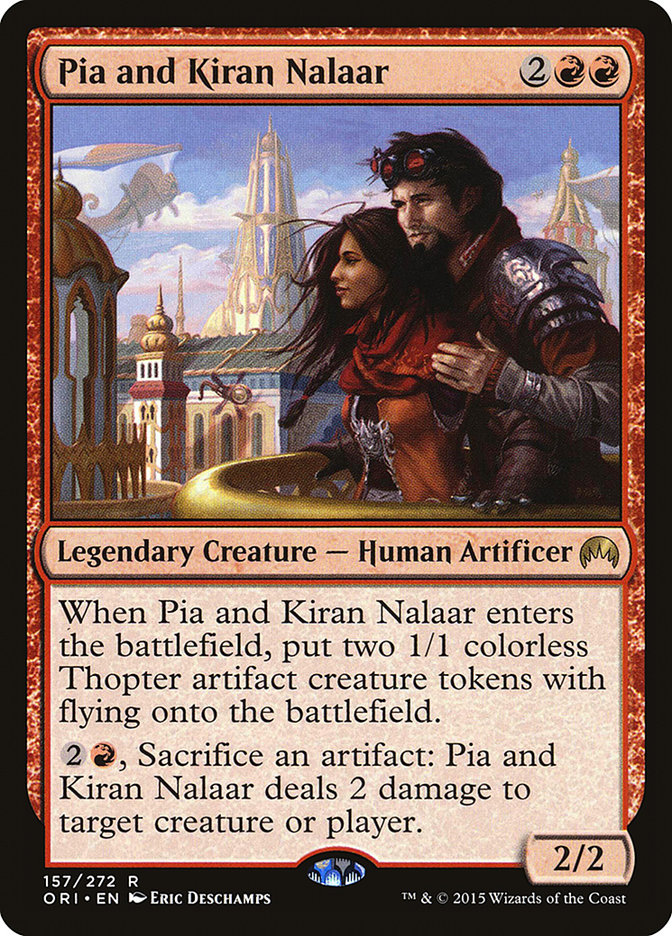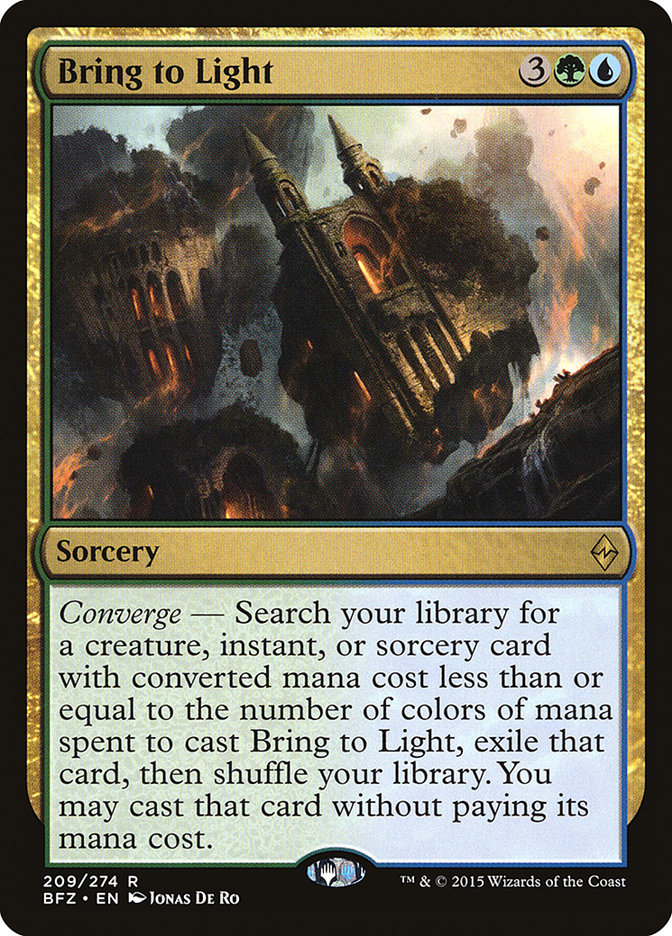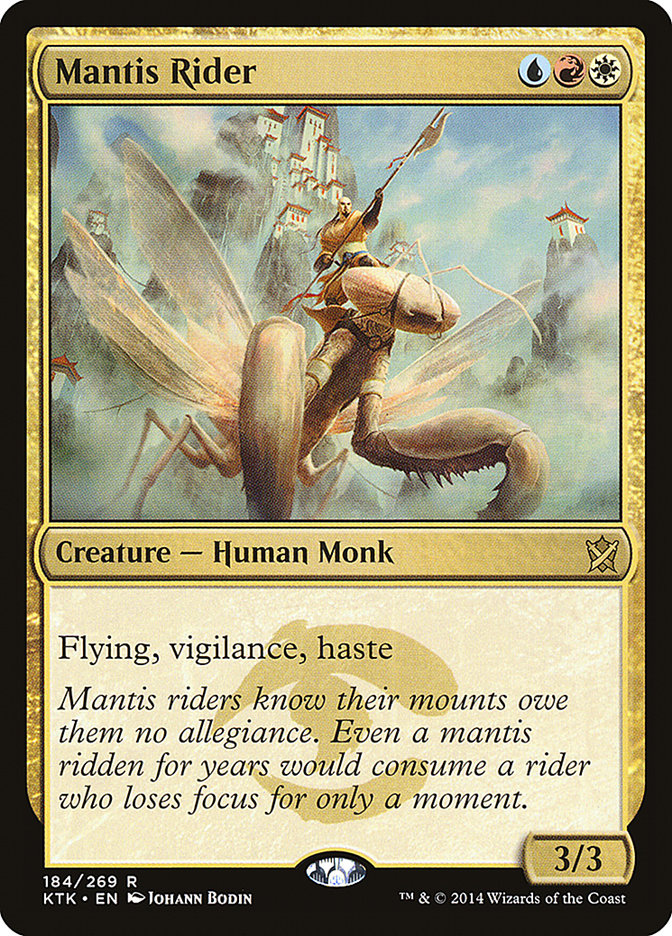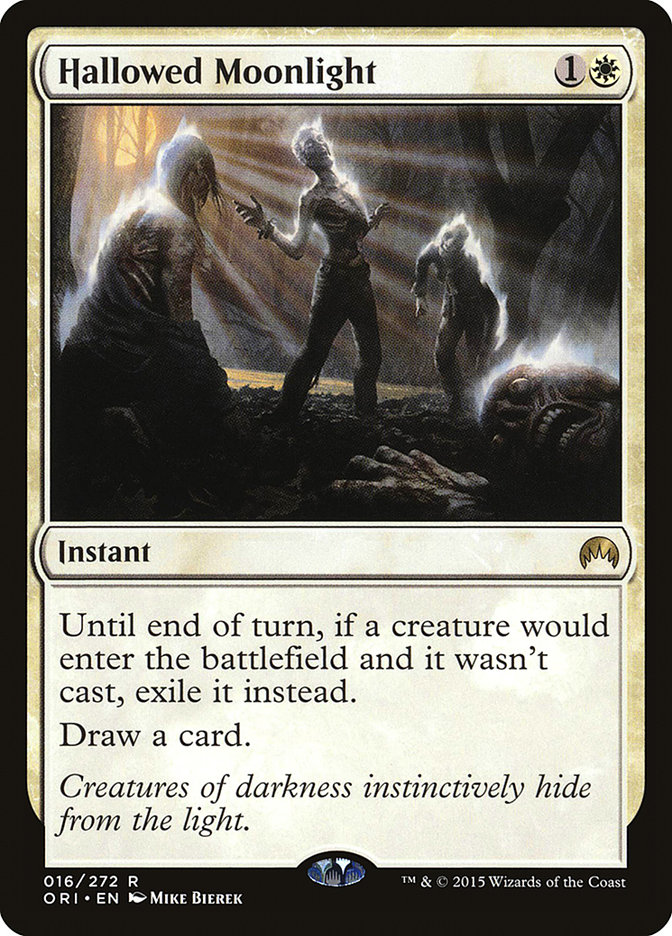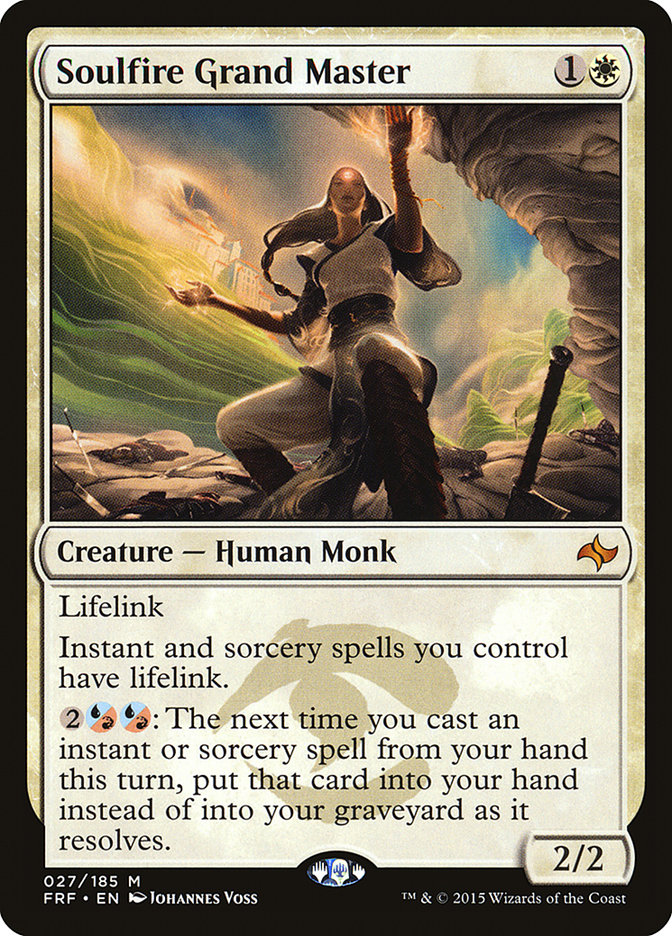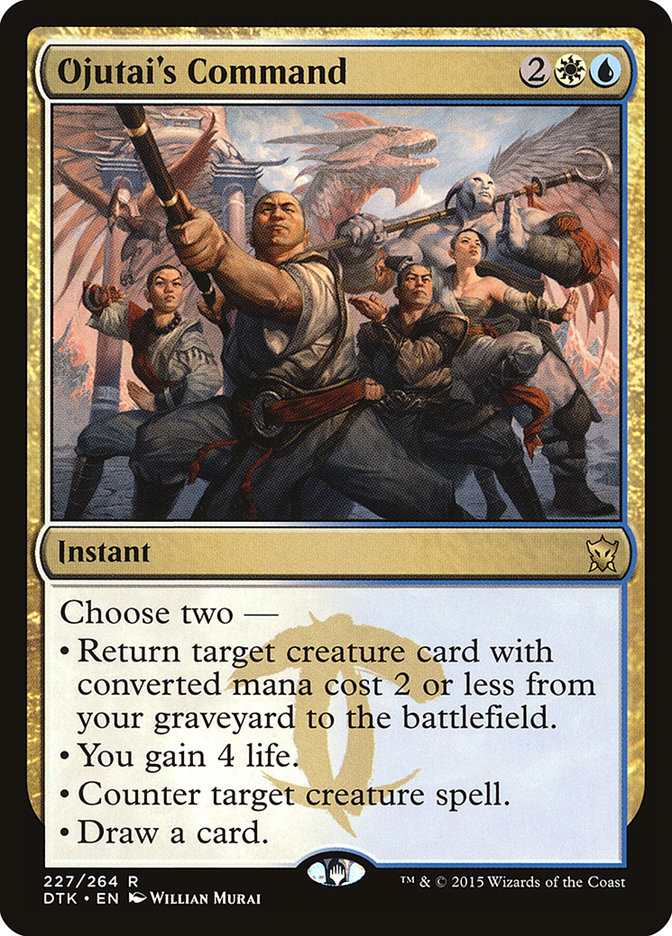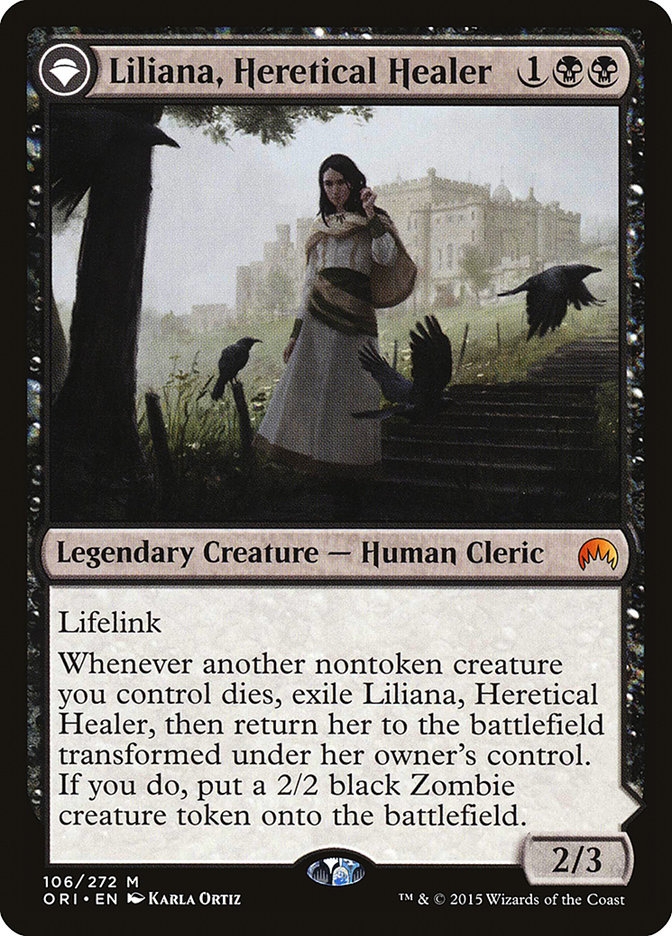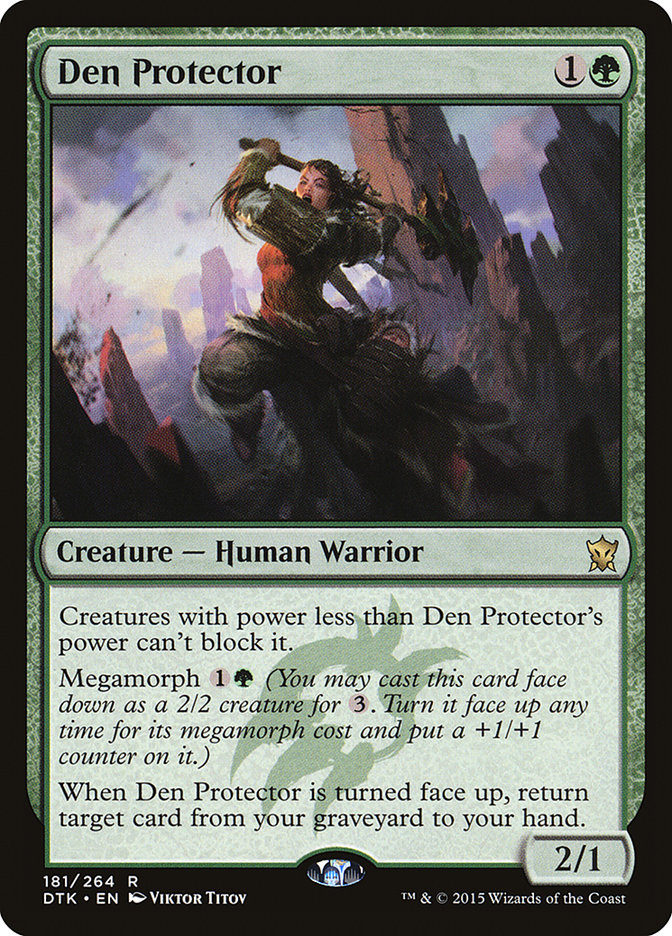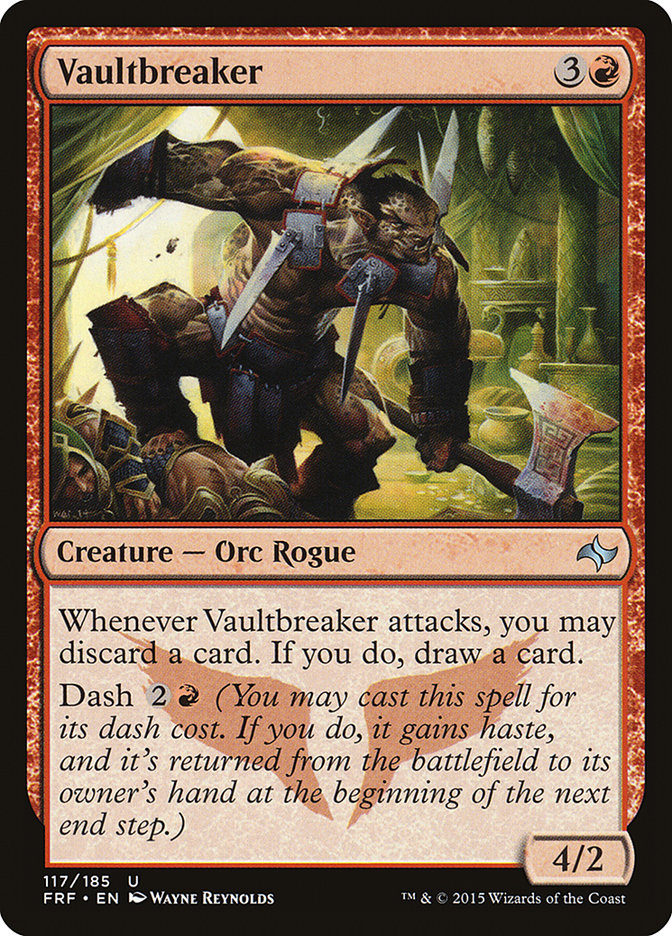With the #SCGINVI in Las Vegas looming, Standard is starting to get really interesting. Decks are evolving almost every week, and while there are many familiar faces like Siege Rhino and Jace, Vryn’s Prodigy, the supporting casts are in constant rotation.
Today we are going to take a look at the most recent top 8 from #SCGDEN for the most up-to-the-minute snapshot we have on the format.
Creatures (14)
Planeswalkers (6)
Lands (25)
Spells (15)

Our winner, Vikram Kudva, brought a very interesting version of Esper Tokens to the event and rode Monastery Mentor and friends all the way to the winner’s podium.
Monastery Mentor is a card that has been picking up steam lately. Already a fixture in Vintage, Monastery Mentor has been slowly working its way back through the formats. It has seen some success in Legacy decks like Chapin’s Esper Delve deck, and I think people are starting to understand its full potential in the smaller formats.
What makes Monastery Mentor so good in Vintage and Legacy is how it can be paired with cheap spells to make sure it is triggered early and often. Standard doesn’t have Brainstorms or Moxen to work with, but Vikram was able to make due with the tools already available.
Vikram started the full set of four Duress, which does a great job at both preempting removal and then triggering Monastery Mentor in the same turn we play it. Murderous Cut is almost on par with Swords to Plowshares/Path to Exile level efficiency, and the absurd Treasure Cruise can keep the gas flowing.
The big payoff for all of these cards costing one mana is that we can play our Monastery Mentor with a few mana open, and play a few spells right away to get a few tokens. This means that even if our opponent kills it we are still getting good value, and the tokens having prowess make them very real threats.
Vikram’s deck also contains a bevy of planeswalkers, and it’s clear to see the strategy he is interested in deploying. All three of these cards work great with the token effects in the deck, but are also just very powerful cards in their own right. It’s tough to even call this deck a token deck at all, as there are no dedicated token producers like Secure the Wastes. In a lot of ways this is just a powerful midrange deck packed to the brim with the best threats and removal, and some of those just happen to put a lot of tokens onto the battlefield.
Interestingly Vikram has completely eschewed Painful Truths, which is definitely the current flavor of the moment. Given the fairly aggressive stance and cheap removal this is somewhat surprising to me, and Painful Truths seems like it is going to define how our midrange decks out card each other for the foreseeable future.
Creatures (16)
- 4 Monastery Swiftspear
- 1 Lightning Berserker
- 3 Zurgo Bellstriker
- 4 Abbot of Keral Keep
- 4 Makindi Sliderunner
Lands (21)
Spells (23)

Coming in second was Lee Marino with a fairly stock Atarka Red deck.
The only real maindeck deviation from the norm here is a full playset of Makindi Sliderunner, which plays very well with the full sets of Become Immense and Titan’s Strength. Lee is not going to be landfalling a ton with only 21 lands, but the built in trample makes Lee less reliant on Temur Battle Rage to break through.
The big innovation is in the sideboard, where Lee has a variety of big threats to bring in to combat the onslaught of removal he will be facing. I’m a huge fan of Hootie and the Mandrills, as it provides an almost Tarmogoyf style threat against decks well suited to handle your smaller creatures. Again, the built in trample is great with the pump effects.
Pia and Kiran Nalaar is another card I think is fantastic, and is excellent against spot removal, and the perfect follow up to getting your battlefield wiped by Radiant Flames. Even if they Fiery Impulse the Pia and Kiran, the two flying tokens are no joke, and they give you a great chance to outgrind decks that are trying to bury you in removal spells.
Atarka Red is a fixture of the format, and it’s very important to keep tabs on what they are up to.
Creatures (13)
Lands (26)
Spells (21)

Miracle master Joe Lossett piloted a bizarre Five-Color Bring to Light deck to third place, and boy is this deck all over the place.
The deck is essentially an Abzan control deck splashing blue for Jace, Vryn’s Prodigy and Treasure Cruise with a Bring to Light package included as well. It contains all the typical Abzan Control elements— Abzan Charm, Languish, Siege Rhino, Den Protector, and Nissa, Vastwood Seer, though it does gain a lot from playing Jace as well.
Joe has taken it pretty easy with his Bring to Light package, with only a few singleton cards to tutor for. None of them are total haymakers, although both Kolaghan’s Command and Silumgar’s Command can be very good at the appropriate times. Of course, just getting more Siege Rhinos is also a very valid strategy, and allowing Jace to put Siege Rhino on the battlefield adds to his versatility.
While Languish does seem pretty cool against a number of decks in the format at the moment, I question if the whole Bring to Light package and awkward manabase is worth the payoff. Decks with Painful Truths and other card advantage engines can probably out card you, and I wonder if the deck would just be better off as an Abzan splash blue deck without Bring to Light.
Creatures (13)
Lands (24)
Spells (23)

Cutting Mantis Rider from Jeskai-based decks has been all the rage lately, but Zach Mandelblatt ain’t got time for that.
Rather than replacing his Mantis Riders with Crackling Dooms, Zach just put them side by side, and takes the deck back to its more aggressive roots. In the never ending card advantage arms race currently happening in all the Jeskai and Mardu decks currently, it’s very easy to forget just how quickly a pair of Mantis Rider will kill you… especially if you’ve spent your time and life casting Painful Truths.
Zach has also made use of Monastery Mentor, and is favoring Seeker of the Way over Soulfire Grand Master. This more focused and aggressive version of Jeskai Black needs to be respected, as if you’re gonna be crazy like Michael Majors and put four copies of Painful Truths in your deck (which I have a ton of respect for), you need to be prepared. Even without Painful Truths and with only four total commands in the deck, Zach still has three Treasure Cruise and two Dig Through Time, so it’s not like he’s skimping on card advantage either.
Mantis Rider is a thing, don’t you forget it.
Creatures (20)
- 3 Heir of the Wilds
- 4 Anafenza, the Foremost
- 2 Wingmate Roc
- 4 Siege Rhino
- 4 Warden of the First Tree
- 3 Den Protector
Planeswalkers (4)
Lands (26)
Spells (10)

Much like Mantis Rider is still a thing, so is Siege Rhino. Logan Mize piloted a very stock version of Abzan Aggro to fifth place in Denver, and it contains all the usual suspects. Heir of the Wilds has become commonplace, as have a few Silkwraps. Really there’s not much interesting to see here until you get to the sideboard.
Be still, my beating heart… is that Pitiless Horde?
Yessir, Logan has a full playset of the forgotten Dragons of Tarkir rare waiting in the wings in his sideboard, and I can see it being a great threat against people who are trying to either ignore your creatures or just ignore you. It’s also a great size and cost to smash through Rally the Ancestors decks before they can get set up.
Speaking of Rally decks, they have been steadily gaining in popularity lately. To combat this, Logan has a pair of Hallowed Moonlight in the sideboard, and this is a card I expect to see a lot more of in the coming weeks. It’s not often your sideboard hate card can be so efficient, and cycle if you don’t need it at the moment. It’s also solid against Secure the Wastes and other token makers as well.
Siege Rhino isn’t going anywhere folks, and while this list is stock, it also must be respected.
Creatures (9)
Lands (26)
Spells (25)
- 2 Duress
- 4 Crackling Doom
- 2 Utter End
- 2 Murderous Cut
- 2 Treasure Cruise
- 3 Ojutai's Command
- 2 Roast
- 2 Kolaghan's Command
- 4 Fiery Impulse
- 2 Painful Truths
Sideboard

SCG’s own Todd Anderson was one of the first to cut Mantis Rider from his Jeskai Black deck, and has done so to the tune of two SCG Open top 8s.
In a lot of ways, this deck is more Mardu Blue than Jeskai Black, but nomenclature aside this is essentially the premier control deck in the format.
Utilizing the lategame power of Jace, Soulfire Grand Master, five commands, Painful Truths, Treasure Cruise, and a few Shambling Vents, no deck currently grinds better than this deck does. Slowly but surely you will have your resources drained away from you, and the tiny incremental advantages will begin to pile up as the game progresses. After many turns of grinding, they will eventually find some way to put you away, usually via the one-of Dragonmaster Outcast.
This is, of course, both the strength and weakness of this deck.
While it grinds better than almost anyone, it doesn’t really have a slam dunk put away card like Elspeth, Sun’s Champion or Sphinx’s Revelation. This means you give your opponent essentially forever to put their plan together, and if you don’t play perfectly and falter at any point, you are toast. I’m usually a big fan of decks like this, but this deck lacks the lategame punch to pay off all the grinding you have to do. Regardless, this is definitely a defining deck of the format.
Creatures (28)
- 4 Nantuko Husk
- 4 Elvish Visionary
- 3 Grim Haruspex
- 4 Sidisi's Faithful
- 1 Liliana, Heretical Healer
- 4 Jace, Vryn's Prodigy
- 4 Catacomb Sifter
- 4 Zulaport Cutthroat
Lands (24)
Spells (8)

Rally the Ancestors is one of the oddballs in the format. So many decks are concerned with grinding out card advantage with tons of two-for-one removal spells, or killing you as fast as possible. Rally has no removal and a relatively slow goldfish.
What it does have that most decks don’t is inevitability.
As it fills the battlefield, draws cards, and interacts with you lightly, it is also setting up for a loose combo finish that most decks in the format aren’t very well equipped to handle. Rally the Ancestors doesn’t always have to be game over, as it can be cast in the midgame for a ton of value, but in the end, eventually, they are going to Rally the Ancestors for a ton and kill you. This is something that few decks in the format have.
Aside from one Liliana, Heretical Healer, Paul’s deck is a very straightforward look at the archetype. Game 1 they are completely focused on grinding and casting Rally the Ancestors, and after sideboard they have a few more options as they can get aggressive with Abzan Ascendancy as well.
Four-Color Rally put three copies into the TCGPlayer.com Champs last weekend as well, and is something that needs to be on your radar.
Creatures (15)
- 4 Monastery Swiftspear
- 1 Goblin Heelcutter
- 2 Lightning Berserker
- 4 Zurgo Bellstriker
- 4 Abbot of Keral Keep
Lands (21)
Spells (24)
- 4 Dragon Fodder
- 4 Titan's Strength
- 2 Hordeling Outburst
- 3 Become Immense
- 4 Wild Slash
- 2 Temur Battle Rage
- 4 Atarka's Command
- 1 Fiery Impulse
Sideboard

Last up in our top 8 is another of SCG’s finest, Tom Ross, playing Atarka Red.
Tom’s decklist is extremely stock, with the only card that stands out at all being the one-of Goblin Heelcutter. Unlike the other Atarka Red deck in this top 8, Tom is playing the more standard Hordeling Outburst as well, which helps him go wide.
In the sideboard Tom has most of the usual suspects, but borrows a page from the R/G Landfall deck with a pair of Den Protectors for the longer matchups. He’s also got a Vaultbreaker, which seems like a nice tool against sweepers. Boiling Earth is one of the best cards for the mirror match, which seems like an important thing to address.
On The Outside / Into the Future
There are, of course, other decks in the format not present in this top 8 like Bant Megamorph, Eldrazi Ramp, and most importantly, Esper Dragons, but this is a great look at what is happening right now in Standard.
Right now card advantage is the name of the game, and it is a battle to see who can either come out on top by playing the highest quantity and quality of card draw spells and card advantage removal, or who can kill their opponent fast enough before all of those cards matter.
I don’t think the optimal build of Jeskai Black / Mardu Blue has been found yet, but that’s mostly because there are just so many tools to work with. All the tools are powerful, but finding the right mix is proving to be quite the challenge.
Tune into the #SCGINVI this weekend to see what I and everyone else has come up with!
Bonus – Stream Update!
I’ve started to stream!
I’ve only done about four streams so far, but the response has been very positive. It’s also been a lot of fun! There’s no set schedule for the moment, but make sure you follow me on Twitter to get notice when I go live. You can also just follow the Twitch channel and you will get an update.
@JimDavisMTG on Twitter
www.twitch.tv/JimDavisMTG
I plan on doing some fun stuff once the #SCGPC is over and perhaps starting an actual schedule, so stay tuned! Some ideas I have are to do a “Funday Monday” where the viewers give me some sort of restriction and I have to build a deck and play a league with it based on that restriction (must play singleton, must build around a certain card, deck size or card limit restrictions, etc). I’ll of course be doing the usual Constructed testing, drafting, and Cube drafting as well.
Please feel free to submit any ideas, and tune in when you can!


